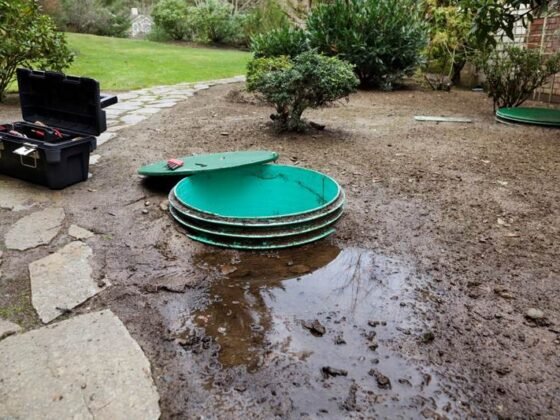Table of Contents Show
A clogged gutter can cause rainwater to overflow and lead to damage to your roof or exterior walls. Before it becomes a problem, there are steps you can take to protect your home and your finances.

Keep reading to learn how to keep your gutters clear and the rainwater flowing freely.
Read Also:
1. Clear the Debris
Gutters can easily collect debris over time and it can vary from leaves, sticks, or tree limbs, to granules from shingles or even plastic shopping bags. These are the main culprits for why rainwater will overflow in your gutters.
One of the easiest ways to clear the debris is by adding a nozzle attachment to your leaf blower. The forced air will push out the debris easily (as long as it is dry) and will save you time.
If the debris is already wet, you can use a power hose to force the dirt and leaves out of the gutter.
If neither of these methods is working out for you, then you can position an appropriately sized ladder next to the gutter and using gloves and a bucket, remove all of the debris by hand.
Make sure to move the ladder once you have cleaned the immediate area and avoid reaching too far. You don’t want to tip the ladder over, falling and injuring yourself.
Sometimes, the gutter along your roofline isn’t the location of the clogged debris. If you have checked there and found nothing, then you should check the downspout and the elbow.
While wearing goggles, use a leaf blower from the bottom of the downspout and force the air up and out.
If you still have some stuck, use a stick to loosen the debris or try forcing it out with a high-powered hose or a pressure washer with a telescoping wand. If worst comes to worst, disassemble the downspout and clear out the debris.
2. Check Gutter Positioning
When installing gutters, it’s important to make sure that the tilt and pitch are correct. If the gutter is tilting away from your home, it will lead to an overflow of water, especially if you are having a heavy storm.
If the pitch is positioned downwards, then it will overflow because it is too steep.
If your gutters are completely level, the water will be prone to accumulating in one spot instead of letting it flow to the point of exit.
If the water is left standing, it will not only overflow, but the weight of it could also start pulling the gutter from your home.
3. Wrong Type of Gutters
The size and makeup of your home will determine what size and type of gutters you should be using. If you have a metal building, you should use metal building gutters to handle all the rain or snow runoff, especially if it is a larger roofed building.
If you have noticed that your gutters have been overflowing but there is no debris clogging them, then they might be too small to handle the amount of rainfall runoff from your roof.
To make sure this is the case, determine if the tilt and pitch are balanced well and if they are, the next step is paying attention to how they perform during a heavy thunderstorm.
If your gutters are overflowing after a big storm, then you will need to replace them with a size bigger than the ones you currently have.
4. Prevention Is Key
Once you have identified what is causing the clog and either cleaned your gutters, adjusted the pitch and tilt, or replaced the size, the next step is to prevent clogs from happening in the future.
Use a gutter screen around the holes for the downspout. A raised screen should be large enough to cover the hole completely.
Next, install a gutter cover over the top of the entirety of the gutter. This will allow the water to still be able to travel through the screen but prohibit larger leaves and sticks from making their way through.
You can buy either plastic or metal mesh gutter covers, but still, check and clear them of debris every six months or so. You should also make sure the screens are still in good shape and replace them as needed.
If you have a fairly steep roof, then the water might travel too fast to collect in the gutter. If this is the case, then you will need to add an L-shaped splash guard that will help collect the water.
You should also trim any overhanging branches from nearby trees away from your home. This will help prevent the leaves and sticks from falling on your roof and will help you keep the gutters clean for longer periods of time.
Use a long-handled saw to cut the branch from the safety of the ground. If you don’t have one, then place the ladder close to the tree and slowly see the branches with back-and-forth motions.
Remove all the branches from the tree that are hanging over your roof and make sure to use caution while doing so. It can be easy to injure yourself from either falling off the roof or dropping a tree limb on top of you.
Learn More About How to Avoid Clogged Gutters Today
It’s crucial to avoid having clogged gutters in your home. Not only can it lead to roof or exterior wall damage, but it can also attract small animals, insects, and even start to smell bad!
For more great ideas on how to keep your home and landscape maintained well, visit our website daily!









